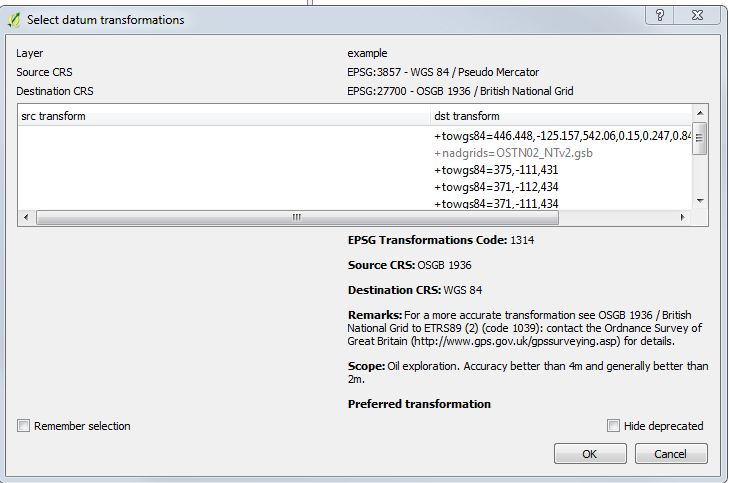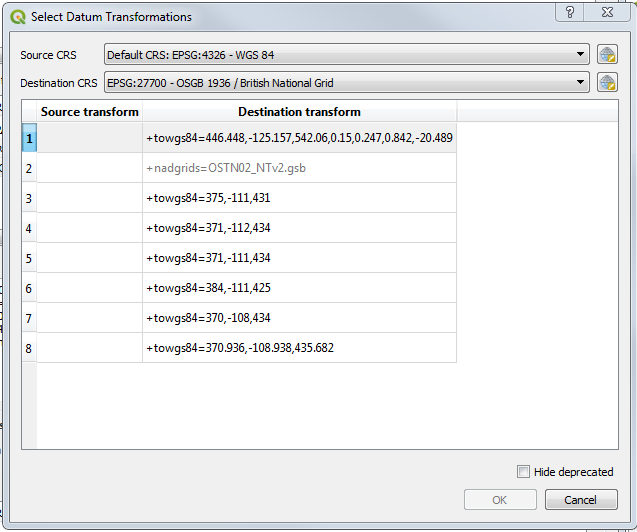The QGIS transformation appears to be named as EPSG:1314. https://epsg.io/1314 so I thought I could transform the data with that to 4326, before sending to the 3DTiles writer. However, I can't find epsg:1314 as a transformation in the csMapReprojector in FME, and none of the available OSGB_to_WGS84 transforms give any better results. So do I need to recreate the transformation parameters of 1314 myself? Or is there another approach. I find it surprising that FME does not have this transformation already so I am starting to wonder if I am either missing something obvious or my approach is flawed.
Hi @maptopixel,
I'm sorry, but this transformation is not shipped with FME, since most users want the more accurate grid transformation.
I have created a couple of definitions for you:
OSGB1936_to_WGS84_7Param - uses 7 parameter algorithm
OSGB1936_to_WGS84_Bursa - use Bursa Wolf 7 parameter approximation
I'm not sure which algorithm QGIS uses for the transformation, so I provided both. One of them should match the QGIS transformation.
Please copy the attached file into your Documents\\FME\\CoordinateSystems folder to make the transformations available to FME.
Hi @DaveAtSafe
Thank you, I think you forgot to attach the files though....
I had a go at creating a transformation definition myself using the parameters from QGIS but it has ended up with the data being way out (> 10m) so it would be interesting to see what I did wrong.
Hi @DaveAtSafe
Thank you, I think you forgot to attach the files though....
I had a go at creating a transformation definition myself using the parameters from QGIS but it has ended up with the data being way out (> 10m) so it would be interesting to see what I did wrong.
I'm sorry about that - here is the file.
epsg1314trans.zip
Hi @maptopixel, in QGIS you have a lot of transformations even the grid transformation. Can't you discover which one you are using?
QGIS 2:

QGIS 3:

Hi @maptopixel, in QGIS you have a lot of transformations even the grid transformation. Can't you discover which one you are using?
QGIS 2:

QGIS 3:

Actually I didn't find a way in QGIS to view what the current OTF transform applied on to an existing project is. I had to work it out in a new project. There is a prompt when differing CRS datasets are first added (as you show) but I never worked out how to view the OTF transform later or change it to an alternative.
Hi @DaveAtSafe
Thank you, I think you forgot to attach the files though....
I had a go at creating a transformation definition myself using the parameters from QGIS but it has ended up with the data being way out (> 10m) so it would be interesting to see what I did wrong.
